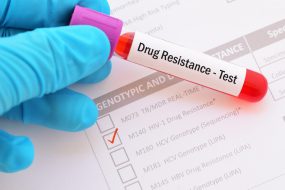Sensitive Genotyping Assay for Global Surveillance of HIV-1 Drug Resistance

HIV is a leading cause of death worldwide. According to World Health Organization (WHO) data, in 2018, 37.9 million people including 1.7 million children lived with HIV globally and the disease claimed 770,000 lives.1 Another 1.7 million people became newly infected with HIV in 2018 alone.2
HIV has the ability to mutate and replicate itself in the presence of antiretroviral drugs which is called HIV drug resistance (HIVDR).3 Consequences of HIVDR include ineffective treatment for those beginning therapy, treatment failure for those on treatment, and spread of drug resistant HIV to newly infected persons.3, 4
CDC researchers developed a low-cost technology to rapidly detect HIV-1 drug resistance in plasma and dried blood spot (DBS) samples with 95.8% genotyping sensitivity. CDC’s partners have licensed, further developed, and incorporated the technology into a commercialized product.
The resulting HIV-1 genotyping kit provides a cost-effective assay, scalable workflow, easy-to-read sequencing results, and robust test performance. The technology delivers high efficiency in genotyping diverse HIV-1 group M strains circulating globally from plasma samples and dried blood spots with substantial reagent cost savings. The DBS testing capability resolves a huge barrier for many resource-poor areas where the World Health Organization recommends HIV drug resistance surveillance and monitoring, but storage and timely transportation of plasma samples from remote locations remain challenging.
As antiretroviral therapy (ART) scale-up continues, population-based HIVDR surveillance is vital to ensure sustained effectiveness of ART treatment regimens and prevent transmission of drug-resistant HIV to newly infected persons. Importantly, in 2017, WHO issued guidelines recommending using an alternative first-line treatment in 12 countries for which resistance to current drugs exceeded 10% (of the HIV population). Since 2017, CDC’s partners have distributed the product to customers in 27 countries. The kits are now in use at genotyping labs in Africa, America, and Asia.